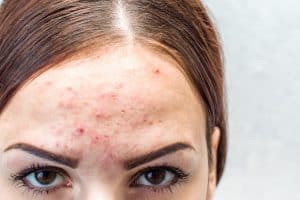If you have acne, you must have probably heard about Retin-A. Among the varied types of prescription products available, Retin-A is the most popular.
What is Retin-A?
- It is a drug obtained from vitamin A.
- The generic name for Retin-A is tretinoin, and it falls under a group of medications known as retinoids.
- Retinoids help in the proper functioning and growth of skin cells.
- Tretinoin is an effective and strong topical retinoid that aids in treating acne and skin ageing.
What Are the Different Types of Retin-A?
Tretinoin is available under various brand names in the market as creams, lotion and gel. Lotions have high water levels and the lowest levels of medication. At the same time, gels contain low levels of medications as well. Finally, creams have the highest levels of medication and work a little faster than the rest. However, your doctor can share which kind would work best for you.
How Does Retin-A Work?
- It prohibits pore blockages from forming.
- The pores remain clean and unclogged, leading to a decrease in blackheads and pimples.
- Retin-A speeds up cell turnover, which aids in quick skin exfoliation and reduction in dead skin cells.
- It also helps make blackheads less sticky that enables them to get to the surface for easy removal.
- With exfoliated skin and clear follicles, it makes the enlarged pores appear smaller.
Acne Scars
There’s still no guarantee or proper reviews to state that Retin-A can remove pitted, raised or depressed acne scars. Due to mixed reviews (1), it’s hard to make any claims.
The maximum it can do is to make minor scars less prominent. However, for major ones, you will need proper treatment.
Dark Marks
Pimples, along with the unpleasant experience, also leave dark marks on your skin.
Retin-A can be beneficial in helping fade those marks. It also speeds up skin cells shedding and helps reduce excess melanin.
Anti-Ageing Benefits
Retin-A not only works for acne but is an ingredient that works as an anti-ageing treatment too. It helps reduce wrinkles and fine lines. Apart from this, you get a smooth and radiant complexion. So if you are looking for a secret to bring back that glorious younger-looking skin, this is what you need.
What Are the Side Effects of Using Retin-A?
Some of the common side-effects of Retin-A are as follows:
- Skin peeling
- Redness
- Burning or stinging of the skin
- Skin tends to turn warm
- Skin gets sunburned easily
- Less common, but you may experience skin darkening if adequate sun protection is not followed.
When Should You Avoid Using Retin-A?
Though Retin-A is safe for almost everyone, there can be exceptions. Given below are some cases where you need to avoid using it.
- If you are trying to be pregnant, are already pregnant, or breastfeeding.
- Suffering from skin conditions like eczema or any other chronic skin condition.
- If you have a sunburn.
- In case you are sensitive to sunlight.
- Those taking photosynthesising drugs (such as phenothiazines, thiazides, tetracyclines, fluoroquinolones etc.)
Helpful Tips While Using Retin-A
- You may face skin peeling and dryness while using Retin-A. However, some tips can help reduce uneasiness and irritation.
- Follow the directions as suggested by your dermatologist. Take a pea-sized amount or as indicated by your doctor instead of using too much. Stick to non-medicated and mild cleansers.
- Do use moisturisers to overcome dryness. Look for oil-free and gentle moisturiser at least twice a day or as per your requirement.
- If you feel it’s hard for you to handle dryness, alter the schedule and have medication every other day.
- Once things are better, get back to using it every day. Use your moisturiser, and then apply Retin-A on top of it.
- If you are facing irritation, you can apply Retin-A for a few hours and then wash it. Over time, you can increase the time as your skin gets used to it.
- Avoid using harsh scrubs as they will cause further damage to your skin.
Summing Up
It’s natural to expect instant results, but that’s not how things work. You may have to be patient, as it may take a few weeks or months before you see any results. Hence, be patient and let Retin-A do its work. Generally, it doesn’t cause any harm, but it’s good to be cautious. For any questions, concerns or queries related to Retin-A or acne, consult a dermatologist.
FAQs
- How long does it take for Retin-A to work on acne?
There isn’t a specific time frame as it may vary depending on your condition. It may take weeks or months. The only way to get a positive outcome is to use it consistently without being impatient.
- Can Retin-A make your acne worse?
As you start using it, you may experience redness, dryness, or an increase in pimples. However, things get better over time. If your condition worsens or you are worried, speak to your doctor.
- Is it okay to use retinol at 21, or should you wait?
It’s good to be cautious early on and look after your skin. You may notice early signs of ageing and sun damage as you enter your 20s. So best would be to start from your late 20s. You can also check with your doctor regarding the usage.




